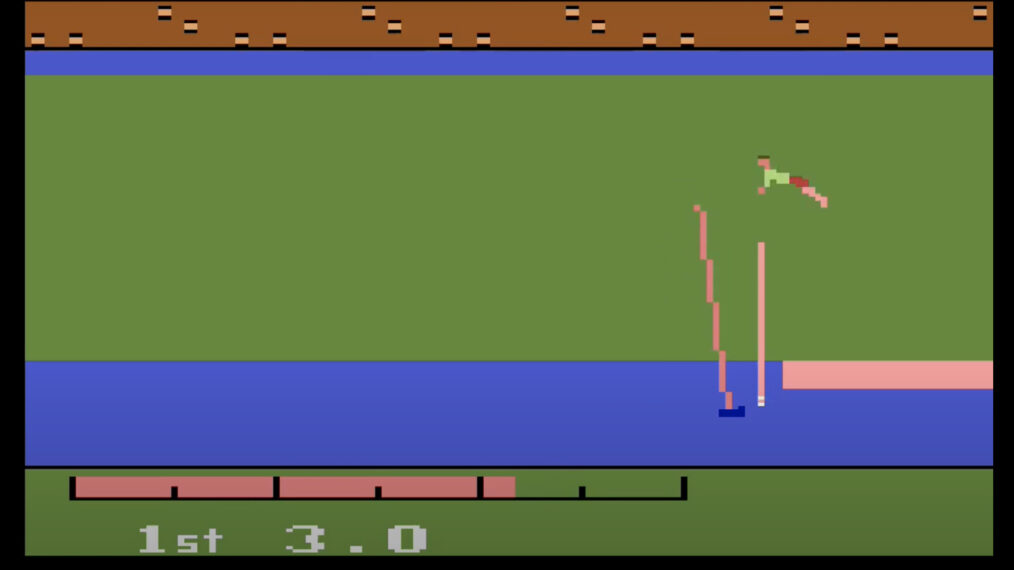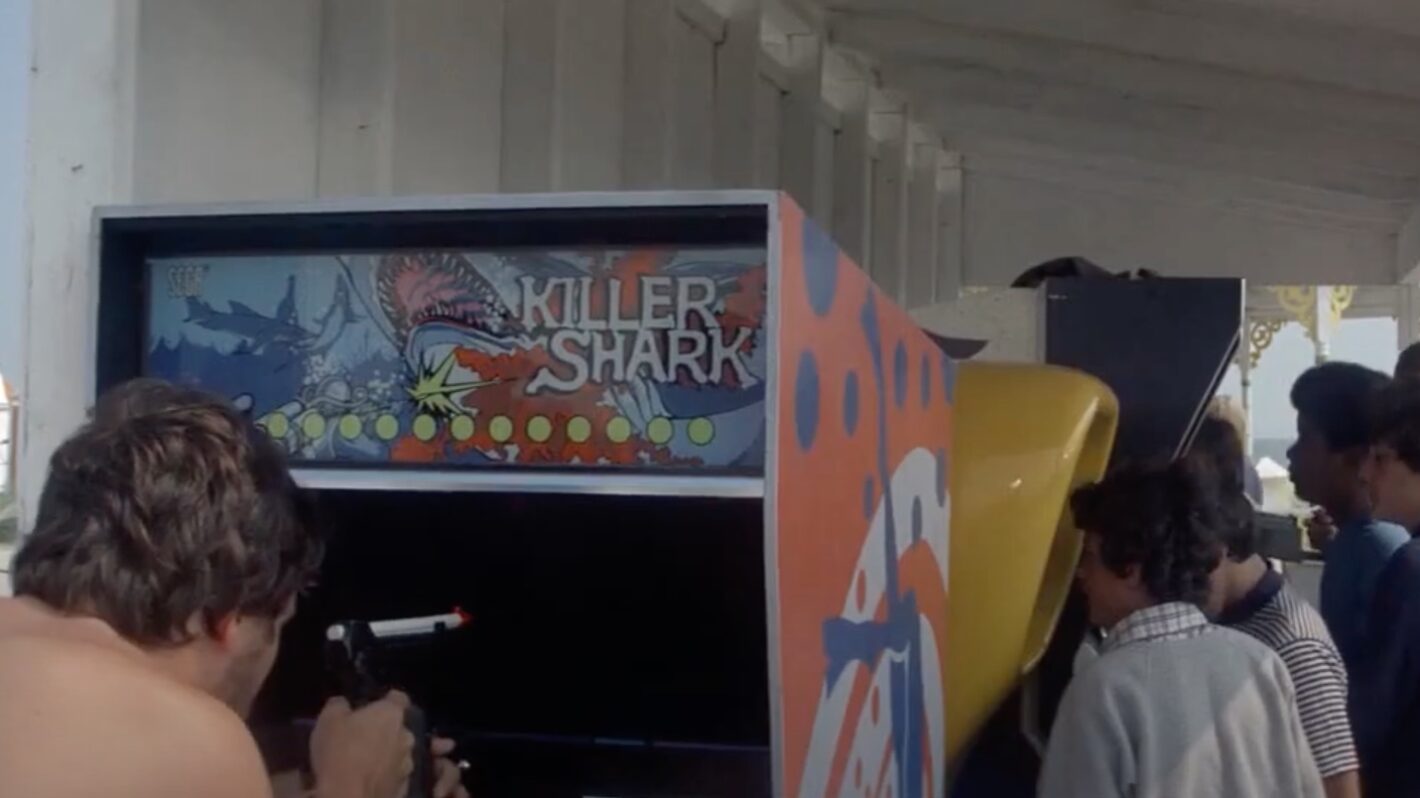Do Anyone Else’s Wrists Still Hurt From Playing ‘The Activision Decathlon’ 40 Years Ago?

The early ’80s featured some Olympics-based video games for home computers and home consoles that, despite their now primitive-looking graphics and gameplay, were cool to play at the time and which I fondly remember (and even sometimes still get to play).
One of the earliest titles that I’m aware of was Olympic Decathlon, which was initially created for the TRS-80 home computer from Tandy that was sold in Radio Shack stores. This first version was released in 1980, and the game concept was soon ported over to other home computers, including the Apple II in 1980. It was on a hand-me-down Apple II+ I got from my uncle in 1984 where I first encountered Olympic Decathlon, which was among the software on the batch of floppy disks he gave me with the computer.
The game was a little awkward (and eventually tiring to the fingers) controlling athletes with various keys on the keyboard and paddles, and sort of confusing when it came to things like figuring out your angle and trajectory for events like the shot put, but I remember having fun with it nonetheless.
It was cool to hear an early “chiptune” version of the classic Olympics theme at the start of this game. Also interesting, and something I had not originally recalled, was that American athlete Caitlyn Jenner (known then as Bruce Jenner, prior to her gender transition), who won the gold medal in decathlon at the 1976 Summer Games in Montreal, was name-dropped in Olympic Decathlon.
You can see some of the game in action below:
Another Olympics-inspired title I enjoyed on my Apple II+ back in the early ’80s was Summer Games, a 1984 release from the now-defunct Epyx company. It was certainly a step up in graphics and sound from Olympic Decathlon, even in its Apple incarnation:
But I was really envious seeing how much better the game appeared in its Commodore 64 version when I played it at a friend’s house:
Summer Games was popular enough that Epyx followed it with other titles in the “Games” series, some of which I had or at least played somewhere, like Summer Games II, Winter Games, California Games and World Games.
But my favorite Olympics video game of that era came courtesy of a title created by Activision, my favorite third-party video game designer back then, initially for my favorite home video game console, the Atari 2600. It was eventually ported to other systems, including, yes, a much better-looking version for the Commodore 64.
That game was The Activision Decathlon, designed by David Crane, who also created, among other titles, the Activision classic Pitfall!
I got this game for Christmas in 1983, probably after hearing about it and wanting it from seeing commercials like this one, in which legendary decathlete Jenner is also featured.
The game box’s front and back cover art was a pretty cool selling point, as well.

© Activision/Courtesy of thecoverproject.net
As you can see from the box art, The Activision Decathlon featured 8-bit adaptations of all 10 events featured in the Olympic decathlon: 110-meter hurdles, 100-meter dash, 400-meter race, 1500-meter race, discus throw, long jump, pole vault, shot put, javelin throw and high jump.
Like most Activision games, if you scored a certain amount, you could receive a special patch of accomplishment. In this case, you could become a member of the Activision Decathlon Club by getting at least 8,600 points, which would net you a bronze-colored patch. If you scored at least 9,000, you could get a silver patch, while with 10,000 points or more you could bring home the gold patch.
(I don’t recall achieving any of those scores. Even if I had, I never had much luck photographing the TV screen when it came to high scores that I did reach on other Activision games. When the film came back from development, it usually turned out too blurry, or with too much of a flash reflection, for the score to be seen.)
Before getting into the events, though, the game greeted you with a little torch-carrying dude running into the arena, accompanied by another early computer version of the Olympic theme, which still makes me smile hearing it.

© Activision/Screenshot youtube.com/@Malkondo
Even back then, I had my doubts about Jenner’s claim in the commercial for The Activision Decathlon that the game re-created the challenge of the decathlon experience.
But, while I wasn’t tested to the limit of my athletic ability, I was unprepared for the degree to which the game was physically tasking in its own way.
If earlier Olympic computer games had tired my fingers as I controlled the runners and pole-vaulters, this one gave my whole hand a workout. In order to get your little guy to run, you had to rapidly and somewhat violently move the joystick back-and-forth. The quicker you did that, the faster he would run.
Continuing to operate the joystick in that way over the course of 10 events — especially the 1500-meter race, which could take a few minutes of frantic joystick manipulation (not a euphemism) — over several plays of the game eventually gave me my first experience with the sort of wrist weariness/soreness that I would come to know very well in later decades as my world transitioned more into computer work and typing.
Additionally, working the joysticks like that inevitably led to them breaking. When I dug up my old Atari 2600 from storage last year, after not having seen or used it in a very long time, I found with it a graveyard of busted joysticks that I’m sure must have been victims of The Activision Decathlon.
Despite all that (or maybe even partly because of all that), I certainly still think about The Activision Decathlon, especially when the real Olympics roll around every four years. I have the original game cartridge along with my old 2600, so maybe I’ll give it a whirl again if I can somehow track down a working joystick.
If not, I can at least enjoy some of the gameplay videos that are out there, like the ones below. (On the second video, don’t worry; the fapping sound you can hear is just the player rapidly moving the joystick combined with the footsteps of the game character. At least I’m pretty sure that’s all it is …)


